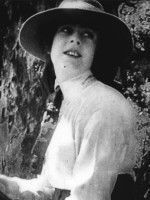Raymond Longford est un Acteur, Réalisateur, Scénariste et Producteur Australien né le 23 septembre 1878 à Hawthorn, Victoria (Australie)
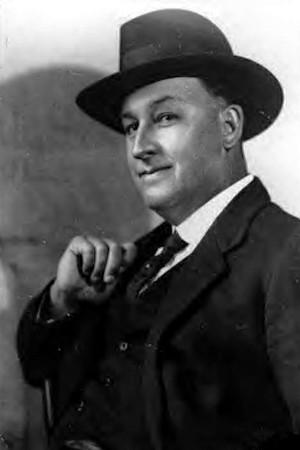
Raymond Longford est un réalisateur, scénariste, acteur et producteur de cinéma australien. Né le 23 septembre 1878 à Hawthorn (dans la banlieue de Melbourne), il est mort le 2 avril 1959 à Sydney (Nouvelle-Galles du Sud).
Longford became a sailor and spent his early life at sea. He started acting on the stage in India under the name Raymond Hollis Longford. In the early 1900s he toured Australia and New Zealand with Edwin Geach's Popular Dramatic Organisation, and Clarke and Meynell companies. He was a stage manager for the Liliam Meyers Dramatic Company. Longford often appeared alongside a young actress called Lottie Lyell, who would become Longford's key creative partner.
Film career
In 1908 Longford worked on a film produced by Charles Cozens Spencer about the fight between Tommy Burns and Jack Johnson, probably the first movie Longford was involved in. He then began appearing in movies for Spencer as an actor under the direction of Alfred Rolfe such as Captain Midnight, the Bush King (1911).
Move into Directing
Rolfe eventually left Spencer's company to make films elsewhere so in 1911 Spencer hired Longford to direct his first feature, The Fatal Wedding, adapted from a play in which Longford had appeared on stage and starring Lyell. Made quickly, with a limited budget and small crew, it was a major financial success and launched his career behind the camera.
Longford followed this up with several other play adaptations for Spencer including The Romantic Story of Margaret Catchpole (1911), Sweet Nell of Old Drury and The Midnight Wedding (1912); Longford also wrote an original for the screen The Tide of Death. Lyell appeared in most of these and also made increasingly important contributions behind the scene as a writer, editor, producer and co-director.
Freelancing
Charles Cozens Spencer eventually withdrew from Australian film production due to the formation of "the Combine" (which absorbed Spencer's old company). This left Longford without his main backer and he found it increasingly difficult to secure funding for a time.
He went to work for the Fraser Film Release and Photographic Company for who he made a feature and a number of shorts, however they eventually ended the contract after Longford became involved in a lawsuit following the making of the highly popular The Silence of Dean Maitland (1914).
Longford made another number of shorts for a variety of companies and taught film acting. He then made two films in New Zealand and also became embroiled in another legal battle over The Church and the Woman (1917).
Career Peak: The Sentimental Bloke
Longford's career revived towards the end of World War I when he helped establish the Southern Cross Feature Film Company in South Australia. He enjoyed a large box office success with The Woman Suffers (1918) (despite the film being banned in New South Wales) which enabled him to get finance for an adaptation of the poetry of C. J. Dennis, The Sentimental Bloke (1919). This was an enormous critical and popular success, and is regarded as one of the greatest Australian films of all time. Longford followed it with another hit, On Our Selection (1920), from the stories of Steele Rudd.
The popularity of these two movies saw Longford move away from melodramatic convention to more realistic treatment of subject matter. Both Bloke and Selection led to well-received sequels which were also directed by Longford. He and Lyell had another hit with The Blue Mountains Murder Mystery.
Decline
As the 1920s went on, Longford again found difficulties securing finance and/or distribution for his films. He and Lyell formed a company and he made some for Australasian Films but the collaboration was not a successful one. In 1925 Lottie Lyell died of tuberculosis and Longford's career never recovered.
In 1926 it was announced Longford would serve on the board of the film company Phillips Film Productions Ltd, but little seems to have come of this. He gave evidence at the 1928 Royal Commission on the Moving Picture Industry in Australia where he urged the introduction of a quota for local movies and complained about the influence of the Combine of Australasian Films and Union Theatres on local production.
Longford appeared in bankruptcy court in 1929 but managed to tour Europe the following year.
Sound Era
Throughout the 1930s Longford worked steadily as an actor and assistant director but only directed one feature, The Man They Could Not Hang (1934) That year he was elected head of the New South Wales Talking Picture Producers Association with the aim of promoting a quota for Australian films. In 1935 he established Mastercraft Film Corporation Ltd to take advantage of the 1935 NSW Quota Act but the hoped for boom in production did not eventuate and Matercraft made no movies.
Later years
Longford managed to stay employed in the film industry during the 1930s but found this impossible with the advent to World War II, which brought local production to an almost complete halt. During the war he was a clerk for the U.S. military stationed in Australia, then he became a night watchman on the Sydney wharfs.
In October 1950 Longford was profiled by Ernest Harrison for AM magazine, then in 1955 a complete 35 mm print of The Sentimental Bloke was discovered and screened at the Sydney and Melbourne Film Festivals, bringing renewed attention to Longford. He died on 2 April 1959 at the age of 80.
Source : Wikidata
Raymond Longford

- Infos
- Photos
- Meilleurs films
- Famille
- Personnages
- Récompenses
Nom de naissance John Walter Longford
Nationalité Australie
Naissance 23 septembre 1878 à Hawthorn, Victoria (Australie)
Mort 2 avril 1959 (à 80 ans)
Nationalité Australie
Naissance 23 septembre 1878 à Hawthorn, Victoria (Australie)
Mort 2 avril 1959 (à 80 ans)
Biographie
John Walter Hollis Longford was born in Hawthorn, a suburb of Melbourne, son of John Walter Longford, a civil servant originally from Sydney, and his English wife, Charlotte Maria. His family soon started referring to him as "Ray". By 1880 they briefly moved to Paynesville, then went to Sydney when Longford's father became a warder at Darlinghurst Gaol.Longford became a sailor and spent his early life at sea. He started acting on the stage in India under the name Raymond Hollis Longford. In the early 1900s he toured Australia and New Zealand with Edwin Geach's Popular Dramatic Organisation, and Clarke and Meynell companies. He was a stage manager for the Liliam Meyers Dramatic Company. Longford often appeared alongside a young actress called Lottie Lyell, who would become Longford's key creative partner.
Film career
In 1908 Longford worked on a film produced by Charles Cozens Spencer about the fight between Tommy Burns and Jack Johnson, probably the first movie Longford was involved in. He then began appearing in movies for Spencer as an actor under the direction of Alfred Rolfe such as Captain Midnight, the Bush King (1911).
Move into Directing
Rolfe eventually left Spencer's company to make films elsewhere so in 1911 Spencer hired Longford to direct his first feature, The Fatal Wedding, adapted from a play in which Longford had appeared on stage and starring Lyell. Made quickly, with a limited budget and small crew, it was a major financial success and launched his career behind the camera.
Longford followed this up with several other play adaptations for Spencer including The Romantic Story of Margaret Catchpole (1911), Sweet Nell of Old Drury and The Midnight Wedding (1912); Longford also wrote an original for the screen The Tide of Death. Lyell appeared in most of these and also made increasingly important contributions behind the scene as a writer, editor, producer and co-director.
Freelancing
Charles Cozens Spencer eventually withdrew from Australian film production due to the formation of "the Combine" (which absorbed Spencer's old company). This left Longford without his main backer and he found it increasingly difficult to secure funding for a time.
He went to work for the Fraser Film Release and Photographic Company for who he made a feature and a number of shorts, however they eventually ended the contract after Longford became involved in a lawsuit following the making of the highly popular The Silence of Dean Maitland (1914).
Longford made another number of shorts for a variety of companies and taught film acting. He then made two films in New Zealand and also became embroiled in another legal battle over The Church and the Woman (1917).
Career Peak: The Sentimental Bloke
Longford's career revived towards the end of World War I when he helped establish the Southern Cross Feature Film Company in South Australia. He enjoyed a large box office success with The Woman Suffers (1918) (despite the film being banned in New South Wales) which enabled him to get finance for an adaptation of the poetry of C. J. Dennis, The Sentimental Bloke (1919). This was an enormous critical and popular success, and is regarded as one of the greatest Australian films of all time. Longford followed it with another hit, On Our Selection (1920), from the stories of Steele Rudd.
The popularity of these two movies saw Longford move away from melodramatic convention to more realistic treatment of subject matter. Both Bloke and Selection led to well-received sequels which were also directed by Longford. He and Lyell had another hit with The Blue Mountains Murder Mystery.
Decline
As the 1920s went on, Longford again found difficulties securing finance and/or distribution for his films. He and Lyell formed a company and he made some for Australasian Films but the collaboration was not a successful one. In 1925 Lottie Lyell died of tuberculosis and Longford's career never recovered.
In 1926 it was announced Longford would serve on the board of the film company Phillips Film Productions Ltd, but little seems to have come of this. He gave evidence at the 1928 Royal Commission on the Moving Picture Industry in Australia where he urged the introduction of a quota for local movies and complained about the influence of the Combine of Australasian Films and Union Theatres on local production.
Longford appeared in bankruptcy court in 1929 but managed to tour Europe the following year.
Sound Era
Throughout the 1930s Longford worked steadily as an actor and assistant director but only directed one feature, The Man They Could Not Hang (1934) That year he was elected head of the New South Wales Talking Picture Producers Association with the aim of promoting a quota for Australian films. In 1935 he established Mastercraft Film Corporation Ltd to take advantage of the 1935 NSW Quota Act but the hoped for boom in production did not eventuate and Matercraft made no movies.
Later years
Longford managed to stay employed in the film industry during the 1930s but found this impossible with the advent to World War II, which brought local production to an almost complete halt. During the war he was a clerk for the U.S. military stationed in Australia, then he became a night watchman on the Sydney wharfs.
In October 1950 Longford was profiled by Ernest Harrison for AM magazine, then in 1955 a complete 35 mm print of The Sentimental Bloke was discovered and screened at the Sydney and Melbourne Film Festivals, bringing renewed attention to Longford. He died on 2 April 1959 at the age of 80.
Le plus souvent avec
Filmographie de Raymond Longford (49 films)
Acteur

The Power and the Glory (1941)
, 1h33Genres Drame, Guerre, Thriller
Acteurs Peter Finch, Raymond Longford
Rôle Nazi Admiral
In Europe, a peaceful Czech scientist, Professor Marnelle, has unintentionally developed a nerve gas while working on a new fuel. Marnelle doesn’t want to use his invention for evil but he's threatened by his Nazi masters, including Von Schweig with a concentration camp. Marnelle destroys his lab and manages to escape with his daughter Elsa – but is then recaptured.

Racing Luck (1941)
, 1h6Genres Comédie
Acteurs Raymond Longford
Note34%





Two World War I veterans, Blue and Darkie, save an old race horse from being put down. Bluey restores it to healthy using potions used on camels during the war. The horse starts to win races but Darkie gets too excited, suffers a stroke and dies.

That Certain Something (1941)
, 1h30Réalisé par Clarence G. Badger
Genres Comédie, Musical, Romance
Thèmes Musique
Acteurs Raymond Longford
A famous director, Robert Grimble, comes to Australia to make a film about pioneering women and seeks for an unknown to play the lead role. He casts socialist Miss Hemingway, who soon proves to be temperamental. She is tricked into walking off the job by Jimmie Jones who wants his girlfriend Patsy cast. He succeeds and Patsy becomes a star.

Dad Rudd, MP (1940)
, 1h23Réalisé par Ken G. Hall
Genres Comédie
Acteurs Barbara Weeks, Chips Rafferty, Raymond Longford
Rôle electoral officer
Note70%





Dad Rudd wants the size of a local dam increased for the benefit of local farmers but faces opposition from a wealthy grazier, Henry Webster. When the local Member of Parliament dies, Webster runs for his seat, and Rudd decides to oppose him.
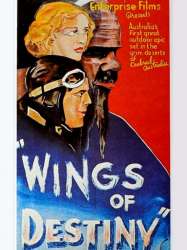
Wings of Destiny (1940)
, 1h8Genres Action
Acteurs Raymond Longford
Rôle Peters
A group of Australians are investigating a reported discovery of wolframite, a material needed for the manufacture of armaments. A plane carrying the group is sabotaged by a German agent, Mark Heinrich, and is forced down in the desert. The group survives and encounter with some aboriginals but the young pilot is killed when trying to fly the damaged plane.

Dad and Dave Come to Town (1938)
, 1h37Réalisé par Ken G. Hall
Genres Comédie
Acteurs Ann Richards, Peter Finch, Raymond Longford, George Lloyd
Rôle Policier
Note64%





Life is busy on the Rudd farm: Dave keeps inventing things, Joe has a tooth ache, Billy Ryan wants to marry Sarah Rudd but Dad is feuding with Billy's father, Old Man Ryan, who wants to buy Dad's bottom paddock.
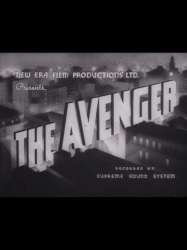
The Avenger (1937)
, 55minutesGenres Drame, Romance
Acteurs Raymond Longford
Rôle Warren
A reformed thief marries a wealthy socialite but is haunted by a former accomplice who tries to frame him for murder.
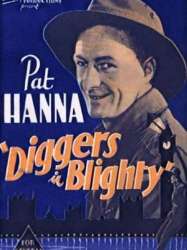
Diggers in Blighty (1933)
, 1h12Réalisé par Raymond Longford
Genres Comédie
Acteurs Raymond Longford
Rôle Von Schieling
Note65%





While serving in the Australian Army in France in 1918, soldiers Chic and Joe steal some rum from the quartermaster's store. They later help British intelligence pass on some false battle plans to a German spy and are rewarded with ten days' leave in England. They go to a country house in Essex and have trouble with their uncouth manners but help some upper class friends have a romance.

A Maori Maid's Love (1916)
Réalisé par Raymond Longford
Thèmes La mer, Transport
Acteurs Lottie Lyell, Raymond Longford
Graham, an unhappily married surveyor, goes on a job to New Zealand where he falls in love with a Maori woman. She becomes pregnant and died in childbirth. Graham puts his daughter in the care of Maori Jack, who later kills Graham. However his daughter (Lottie Lyell) inherits his property and falls in love with a jackeroo called Jim.
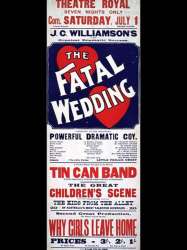
The Fatal Wedding (1911)
Réalisé par Raymond Longford
Acteurs Raymond Longford, Lottie Lyell
Rôle Howard Wilson
An adventuress, Cora Williams is in love with Harold Wilson, even though he is happily married to Mabel, and they have small children. Cora gets a man called Curtis to pretend to be in love with Mabel and engineers a situation where Harold walks in on them and gets the wrong impression. It works, Harold divorces Mabel and gets custody of their children Jessie and Frankie. Mabel winds up abducting them.

Réalisé par Raymond Longford
Genres Drame, Aventure
Acteurs Lottie Lyell, Raymond Longford
Rôle Will Laud
Note53%





In the south coast of England, a young woman, Margaret Catchpole (Lottie Lyell), is pursued by two men, the smuggler Will Laud (Raymond Longford) and the coastguard officer Lieutenant Barry (Augustus Neville). Laud is killed in a fight with coast guards and Margaret is sentenced to Botany Bay for horse stealing. She later marries Barry, who has since moved to Sydney, and becomes well-regarded for her hospital work.
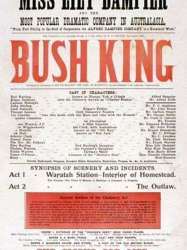
Genres Western
Thèmes La mer, Transport, Adaptation d'une pièce de théâtre
Acteurs Raymond Longford, Lottie Lyell
Note60%





Edgar Dalimore is the son of wealthy station owner Cecil Dalimore, who is persuaded to disinherit his son on false grounds by Cecil's villainous nephew Vincent Lennox. Lennox and an associate, John Stirling, rob a safe belonging to Cecil, resulting in the latter's death. Edgar is wrongfully accused of the murder and is given a life sentence.
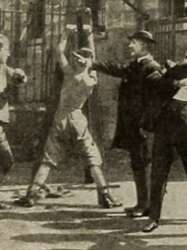
The Life of Rufus Dawes (1911)
Acteurs Raymond Longford, Lottie Lyell
Rôle Gabbett
ENGLAND – A room at Hampstead heath – Sir Richard Devine refuses to be blackmailed by Crofton, alias John Rex – The Scapepgrace Dick Devine quarrels with his father, Sir Richard Devine is cast off forever – Sir Richard awaiting Parson North is murdered by Rex – North discovers the body and secures his own forged bills – Dick, accused of murder gives his name as Rufus Dawes – Parson North denounces Rex as a notorious highwayman. VAN DIEMEN'S LAND – the convict settlement at Hell's Gate; life on the chain gang; Gabbet's escape and capture; the Rev. Meakin visits his flock; Chaplain North gives the convicts tobacco; Lt Frere threatens to report him; Major Vickers announces the move to Port Arthur; the attack by the convicts; the prisoner Troke saved by North; the departure from the settlement.

Thèmes La mer, Transport
Acteurs Raymond Longford
Note56%





The film starts with John Vane accepting a wager that he wouldn't bail up a Chinese man. Then Vane wins his bet by robbing a Chinese man, leading to headlines which say "Robbery Under Arms by John Vane" and Vane fleeing to the bush with his sweetheart. Later adventures include his capture and release of his sweetheart; the sticking up of the Keightley Homestead; the shooting of Michael Burke, which leads to Vane joining the Ben Hall gang; Vane's change of heart and surrender to Father McCarthy. He serves fifteen years in prison and after release retires comfortably.
 Connexion
Connexion
